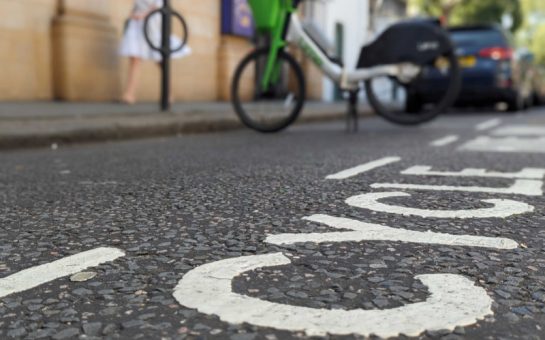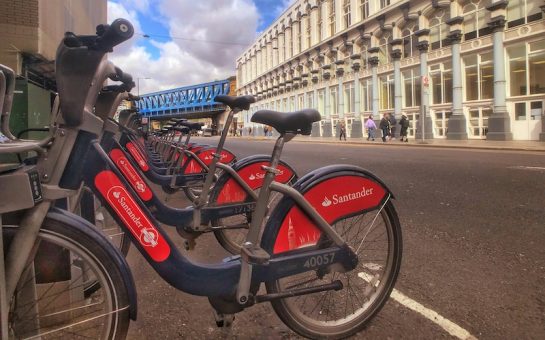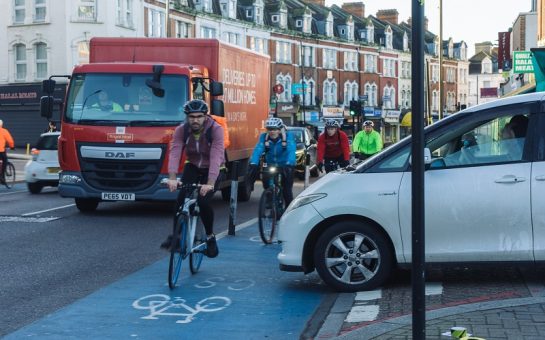A new campaign by the London Cycling Campaign is urging city leaders to make cycling more accessible and inclusive.
Under the banner Dare to Dream: A Bike for Every Londoner, the initiative promotes cycling as a healthier, greener, and more efficient alternative to car travel.
But as momentum builds, data paints a troubling picture as London remains home to some of the most dangerous streets in the UK for cyclists.
Cycling UK’s senior policy officer Monica Scigliano praised improvements in infrastructure and reduced speed limits across the capital.
She said: “London has improved cycling safety through better infrastructure and lower speed limits.
“In 2023, the local authorities with the highest number of cyclist fatalities were actually outside London, despite the capital having more cyclists overall.”
Much of London now operates under 20mph speed limits, significantly reducing the likelihood of fatal collisions.
However, Scigliano warned that safety remains patchy.
She said: “Protected cycle lanes must connect homes, schools, and high streets, not just workplaces.”
She cited studies showing physically separated cycle lanes can reduce casualties by 40–65%, whereas painted lanes without protection may pose more danger than no lanes at all.
Scigliano also raised concerns about low public awareness of the Hierarchy of Road Users, a key addition to the Highway Code in 2022, which places the greatest responsibility on drivers of larger vehicles.
She said: “Three years on, many drivers don’t know about it.
“The campaign lacked reach and funding.”
Gender disparity is another issue as men cycle twice as much as women in London.
Just 8% of women cycle weekly, highlighting barriers around safety and accessibility.
Cycling UK is calling on central government to allocate 10% of the national transport budget to active travel.
Scigliano said: “Without proper investment, cycling infrastructure will remain piecemeal and many people will not feel safe enough to make the switch.”
Cyclist casualties: The London picture
Research by SIA licence training provider Get Licensed revealed London boroughs dominate the list for cycling casualties per 10,000 residents.
Looking at the top five boroughs with the highest cyclist rates per 10,000 in 2023, councils are doing more to help mitigate the incidents.
- Kensington and Chelsea – 11.7
- Hackney – 11.6
- Southwark – 11.1
- Islington – 10.3
- Camden – 10.3
Southwark recorded the highest total number of cycling casualties with 351 incidents in 2023.
Other high-risk boroughs include Hackney, Tower Hamlets, Wandsworth, and Kensington and Chelsea.
Kensington and Chelsea Council’s lead member for environment and planning, Johnny Thalassites, said: “We don’t recognise the data in this research, but we do carefully analyse Transport for London’s (TfL) collision data and take it very seriously.
“Total road casualties across the borough fell by 13 per cent between 2019 and 2023, but this is no comfort to people who have been seriously injured or lost a loved one.”
Cllr Thalassites pointed to several safety measures being implemented, including converting dangerous mini roundabouts to priority junctions, installing pedestrian crossings, speed humps, and speed indicator devices.
He added: “We are also very supportive of TfL’s programme to improve the junctions at either side of Battersea Bridge.”
The major upgrades at Battersea Bridge are due for completion in October 2025.
The council also offers free cycle training for residents, provides instructor training in schools, and runs social cycling events and bike repair workshops through its Future Neighbourhoods programme in Notting Dale.
Kensington and Chelsea Council disputed the Get Licensed methodology, arguing that using casualty numbers divided by local population or registered vehicles misrepresents risk in boroughs with high volumes of through traffic.
Cllr Thalassites said: “Our borough sees significantly more traffic than vehicle ownership alone would suggest, due to its central London location.”
The council is currently consulting on further traffic-calming and cycling improvements, while cycle training information is available via the council’s website.
As part of the Future Neighbourhoods programme in Notting Dale, the council has also hosted social cycling events and bike repair surgeries to support active travel in the community.
Advocacy group Cycling UK maintains that any push to increase cycling must come with equal emphasis on safety, infrastructure, and education.
Their cycling safety video outlines five top tips for safer journeys, and the organisation continues to lobby for protected lanes, law enforcement, and community education.
Hackney Council were contacted for comment.
Safety, infrastructure and investment
Meanwhile, bike hire operator Lime has committed £20 million to its London Infrastructure and Safety Plan.
The plan incudes £5million for 2,500 new parking spaces, £13.4million for operations and staffing, real-time parking enforcement technology, £250,000 safety awareness campaign, and a £250,000 fund for community cycling initiatives.
Lime’s UK and Ireland director of policy Hal Stevenson said: “It has been incredible to see Londoners’ response to Lime.
“With a 61% increase in users last year, we’re having a significant impact on reducing car trips, supporting active travel, and reaching the city’s cycling goals.
“Over 16 million journeys were taken with Lime last year.
“This shows how cities can reduce congestion, improve air quality, and make streets safer for all.”
Staying safe on the road
Transport for London (TfL) offers Cycling Safety Tips: Stay Smart and Visible on London’s Roads including:
Follow the Highway Code
- Stop at red lights: Running them could result in a £50 fine.
- Give way to pedestrians: Cyclists must stop at zebra crossings.
- Stick to the road: Pavement cycling and riding the wrong way up one-way streets is prohibited unless clearly marked.
Ride safely
- Position properly: Stay central on narrow roads and avoid riding too close to parked cars.
- Avoid HGV blind spots: Keep well back from lorries and large vehicles.
Be visible
- Wear bright or reflective clothing during the day and at night.
- Use lights after dark: White at the front, red at the rear—failure to do so can result in a fine.
- Ensure reflectors are fitted to your bike.
Stay alert
- Pay attention to your surroundings—avoid mobile phones and earphones.
- Make eye contact with drivers and use hand signals when turning.
Extra resources
- Cycle training: Free online skills courses and borough-specific training available.
- Cycleways: Learn to navigate new safety features like two-way lanes and shared bus stops through TfL guidance videos.
Visit the Highway Code and TfL websites for more tips on safe cycling and securing your bike.
Taking cycle training for an inexperienced cyclist or if you have not ridden for a while, is suggested by the Department for Transport on the GOV.UK’s website.
Bikeability is the government’s national cycle training programme helping to learn practical skills and understand how to cycle on today’s roads. It offers free courses in certain areas.
The “must” rules include:
- Ensure your brakes are efficient.
- Have white front and red rear lights lit when cycling at night.
Suggestions and reminders to help keep you safe and feel more confident include:
- Have the right size and type of cycle for your comfort and safety.
- The lights and reflectors are kept clean and in good working order.
- The tyres are in good condition and inflated to the pressure shown on the tyre
- The wheels spin freely.
- The gears are working correctly.
- The chain is properly adjusted and oiled.
- The saddle and handlebars are adjusted to the correct height.
Bells should be fitted to cycles.
Knowing the rules of the road and how to stay safe will also help reduce the accident rates.
Feature image: Free to use from Unsplash




